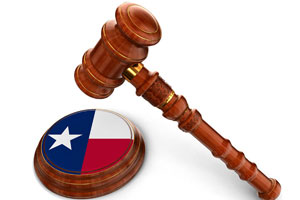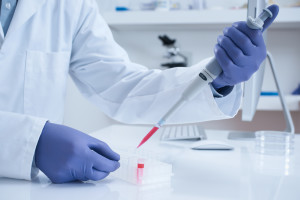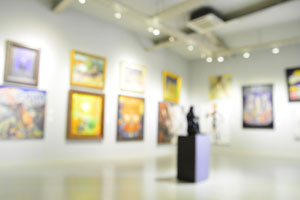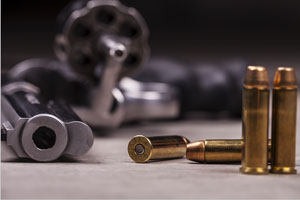An Australian blood-splatter expert telephoned the defense attorney in the Pennsylvania murder trial of Jessica Alinsky because he was shocked by the opinions expressed by a state police trooper who was testifying as a forensics expert. Dr. Mark Reynolds knew about the Alinsky case because the trooper based a presentation on the crime scene evidence while attending a blood-splatter training course that Reynolds taught. According to Reynolds, the trooper would have failed the course if he had been graded on that presentation alone.
Unfortunately for Alinsky, the defense only learned of Dr. Reynolds’ opinion after the trial was underway. The defense moved for a mistrial to give Dr. Reynolds, who was in Australia, time to familiarize himself with the case and to testify as an expert witness. After the judge denied that motion, Alinsky was convicted of third degree murder.
Expert Evidence in Jessica Alinsky’s Murder Trial
Matthew Ryan Gailie, a prison guard, was shot in the head soon after he returned home from work. Prosecutors claimed that his girlfriend, Jessica Alinsky, shot him at close range and then manipulated the murder scene to make it appear that he had committed suicide. Alinksy gave multiple explanations of the shooting to the police, attributing it both to an accident and to suicide. In one version, she said she was upstairs when she heard the shot. At other times, she said she was next to Gailie when the gun went off during a struggle. Alinksy did not testify during the trial.
Gailie’s body was found on the living room floor with a gun in his hand. The gun was in Gailie’s left hand, but Gailie was right-handed. The strongest expert evidence against Alinksy came from forensic pathologist Gary Ross, who testified that people who use a gun to commit suicide usually drop the gun.
The trial began with the expert testimony of Trooper John Corrigon. He concluded that a blood soaked bank statement found next to Corrigon’s body had been planted by Alinsky to suggest a motive for the suicide. He did not believe that a bloody handprint on the back of the statement could have been Gailie’s, because Gailie would have been immediately incapacitated by the shot. He also expressed the opinion that the gun was in the wrong position for Gailie to have fired it.
Based on the substantial amount of blood found on the couch, Corrigon testified that the body had been there for some time. He suggested that blood on Gailie’s leg appeared to be “defying gravity,” creating the appearance that Gailie had first fallen on the couch before being rolled to the floor, causing blood to spray onto the floor under the kitchen table.
Corrigon attributed smears of blood on Gailie’s body to Alinsky’s attempt to clean up the evidence. Using a special dye, police also found evidence of bloody female footprints leading to the bathroom, as well as blood in the bathtub that had been cleaned before the police arrived.
Another forensic expert testified that neither Gailie’s nor Alinsky’s hand tested positive for gunshot residue. Both individuals had traces of gunshot residue components on their bodies, but the expert acknowledged that she could not determine who fired the gun based on that evidence.
Reynolds’ Comments
Corrigon used his analysis of blood-spatter evidence in Alinsky’s case when he made a presentation in the course that Reynolds taught. In an email to the defense attorney, Reynolds said that “in almost every instance there was no underpinning scientific support for what he was saying and/or there was a reasonable alternative(s) supportive of self-infliction.”
Reynolds also recalled that Corrigon “made a number of significant concessions and essentially agreed that there was just as much likelihood of it being self-inflicted as it was a homicide.” Those concessions were not reflected in Corrigon’s courtroom testimony.
After the defense became aware that Reynolds had criticized Corrigon’s analysis, the defense recalled Corrigon as a witness. Corrigon admitted that he wrote no report about the professional criticism, but contended that he was not required to do so. The defense contends that Corrigon concealed exculpatory evidence and that the prosecution had a duty to disclose it.
Reynolds also suggested that Corrigon’s conclusions were influenced by other evidence in the case, including Alinsky’s statements. In a telephonic hearing conducted during a break in the trial, Reynolds told the court that a science expert should base conclusions strictly on science. Taking other evidence into account is the jury’s job, not the expert’s.
Grounds For Appeal
The jury took only two hours to find Alinsky guilty of third degree murder and of tampering with evidence. The jury might have come to the same conclusion even without Corrigon’s testimony, given the conflicting statements that Alinksy made to the police and the other evidence that pointed to her guilt.
It is likely, however, that Alinksy will raise at least two grounds on appeal that might result in a new trial. The first is the judge’s decision not to grant a mistrial, which effectively prevented Alinsky from presenting Reynolds’ expert testimony. That testimony might have given the jury a basis for discounting the conclusions drawn by Corrigon.
Alinsky is also likely to argue that Corrigon had a duty to reveal Reynolds’ professional criticism of his analysis and that the prosecution had a duty to disclose that criticism to the defense. Whether either ground for appeal will result in a new trial for Alinksy will probably not be known for more than a year.












